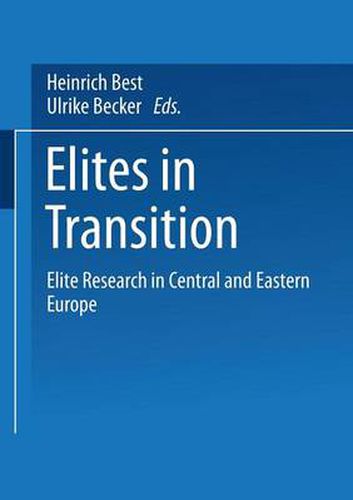Readings Newsletter
Become a Readings Member to make your shopping experience even easier.
Sign in or sign up for free!
You’re not far away from qualifying for FREE standard shipping within Australia
You’ve qualified for FREE standard shipping within Australia
The cart is loading…






This title is printed to order. This book may have been self-published. If so, we cannot guarantee the quality of the content. In the main most books will have gone through the editing process however some may not. We therefore suggest that you be aware of this before ordering this book. If in doubt check either the author or publisher’s details as we are unable to accept any returns unless they are faulty. Please contact us if you have any questions.
Who rules in Eastern Europe? became a fundamental question for western researchers and other observers after communist regimes were established in the region, and it gained further importance as state socialism expanded into Central Europe after the Second World War. A political order which, according to Leninist theory of the state and to subsequent Stalinist political practice, was primarily a highly centralised and repressive power organisation, directed, as if it were natural, researchers attention towards the highest echelon of office holders in party and state. Extreme centralisation of power in these regimes was consequently linked to an elitist approach to analysing them from a distant viewpoint. It is one of the many paradoxes of state socialism, that a social and political order which presumptuously claimed to be the final destination of historical development and to be based on deterministic laws of social evolution, which claimed an egalitarian nature and denied the significance of the individual, was per ceived through the idiosyncrasies, rivalries and personal traits of its rulers. The largest part of these societies remained in grey obscurity, onlyoccasion ally revealing bits of valid information about a social life distant from the centres of power. It is debatable whether this top-headedness of western re search into communist societies created a completely distorted picture of re ality, however, it certainly contributed to an overestimation of the stability of these regimes, an underestimation of their factual diversity and a misjudge ment of the extent of conflicts and cleavages dividing them.
$9.00 standard shipping within Australia
FREE standard shipping within Australia for orders over $100.00
Express & International shipping calculated at checkout
This title is printed to order. This book may have been self-published. If so, we cannot guarantee the quality of the content. In the main most books will have gone through the editing process however some may not. We therefore suggest that you be aware of this before ordering this book. If in doubt check either the author or publisher’s details as we are unable to accept any returns unless they are faulty. Please contact us if you have any questions.
Who rules in Eastern Europe? became a fundamental question for western researchers and other observers after communist regimes were established in the region, and it gained further importance as state socialism expanded into Central Europe after the Second World War. A political order which, according to Leninist theory of the state and to subsequent Stalinist political practice, was primarily a highly centralised and repressive power organisation, directed, as if it were natural, researchers attention towards the highest echelon of office holders in party and state. Extreme centralisation of power in these regimes was consequently linked to an elitist approach to analysing them from a distant viewpoint. It is one of the many paradoxes of state socialism, that a social and political order which presumptuously claimed to be the final destination of historical development and to be based on deterministic laws of social evolution, which claimed an egalitarian nature and denied the significance of the individual, was per ceived through the idiosyncrasies, rivalries and personal traits of its rulers. The largest part of these societies remained in grey obscurity, onlyoccasion ally revealing bits of valid information about a social life distant from the centres of power. It is debatable whether this top-headedness of western re search into communist societies created a completely distorted picture of re ality, however, it certainly contributed to an overestimation of the stability of these regimes, an underestimation of their factual diversity and a misjudge ment of the extent of conflicts and cleavages dividing them.